AMAZON UNDER THREAT: The Amazon rain forests play a significant role in maintaining the balance of the world’s climate. These rain forests also help the world in combating the challenge of global warming.
However, the worldwide coronavirus epidemic has had its effects on the rainforests of the Amazon.
The destruction of forests in the Amazon biological region in the first four months of the year 2020, has seen an increase of 55 percent over the previous year because many people are illegally clearing the forests by taking advantage of the situation created by the coronavirus epidemic.
In the Amazon, the incidence of forest sanctuary, illegal mining, tree deadlock to clear land, and fire in the forest was already the most active in 11 years.
And scientists say that the pace of damage to the Amazon biological sector is so fast that soon we will be standing at such a point of destruction from where it will be difficult to return.
After reaching that point, Amazon will not be able to play the role it currently plays in keeping the world’s balance.
Here we will look at those constraints on Amazon, due to which it is standing at the entrance of destruction today.
And will talk about those nine countries who share this unique natural treasure, what steps are they taking to save the Amazon?
Coronavirus and forest
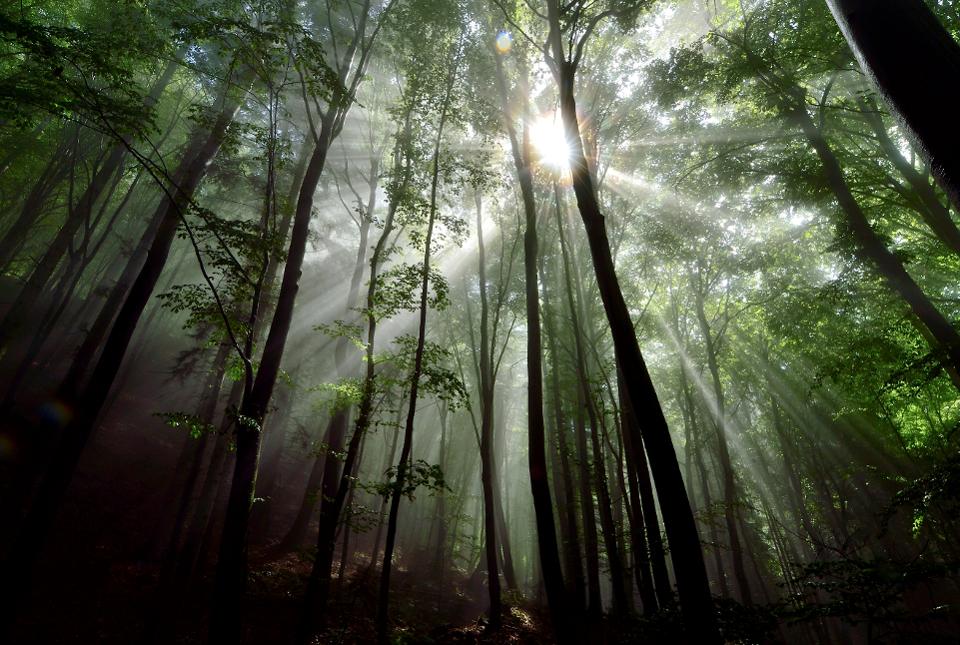
AMAZON UNDER THREAT: The Amazon forests are the most abundant biological region globally and have the highest biodiversity in the world.
Interest, the largest species of tree plants and animals are found here. Three hundred and thirty million humans live in the Amazon biological region.
And it is home to thousands of species of plants and animals. Since the Coronavirus has attacked Brazil, its infection has been the most agile in the Brazilian state of Amazon.
Amazona’s health system is facing the most considerable money loss in Brazil. Like other countries, in Brazil, traffic restrictions have been imposed, and people are being asked to maintain social distancing to reduce the speed of virus infection.
But Jonath Mezowar of Survival International says that one of the consequences of the Coronavirus outbreak in Brazil is that the field agents who had to do duty to prevent the attack in protected forests have been recalled and are now back in the wild not patrolling
In April, when the speed of virus infection increased, many Brazilian states started taking steps to isolate the public.
At the same time, a 64 percent increase was seen in the law against forest cutting incidents in the same month last year.
These figures are based on the initial satellite report of the Space Research Agency INPE. Last year there were unprecedented incidents of fire in the forests, due to which a large part of the Amazon was deforested.
The peak wildfire season starts in July. According to many experts, during this time, the Coronavirus outbreak in Brazil will also be at its peak.
Brazilian officials are deploying security forces in the Amazon region to protect rain forests, cut down illegal trees, and prevent wildfires.
However, critics say that the value and cry the government is adopting, in this case, will lead to illegal mining and illegal tree cutting.
The destruction of forests was seen in nine countries of the Amazon region even before the illegal disposal of forests accelerated this year.
Among the countries in which Amazon’s organic sector suffered the most damage in 2018, Brazil and Bolivia are among the top five countries.
And in both these countries, there has been a considerable increase in the incidents of Amazon forest fire in the last year.
But this is not the only problem
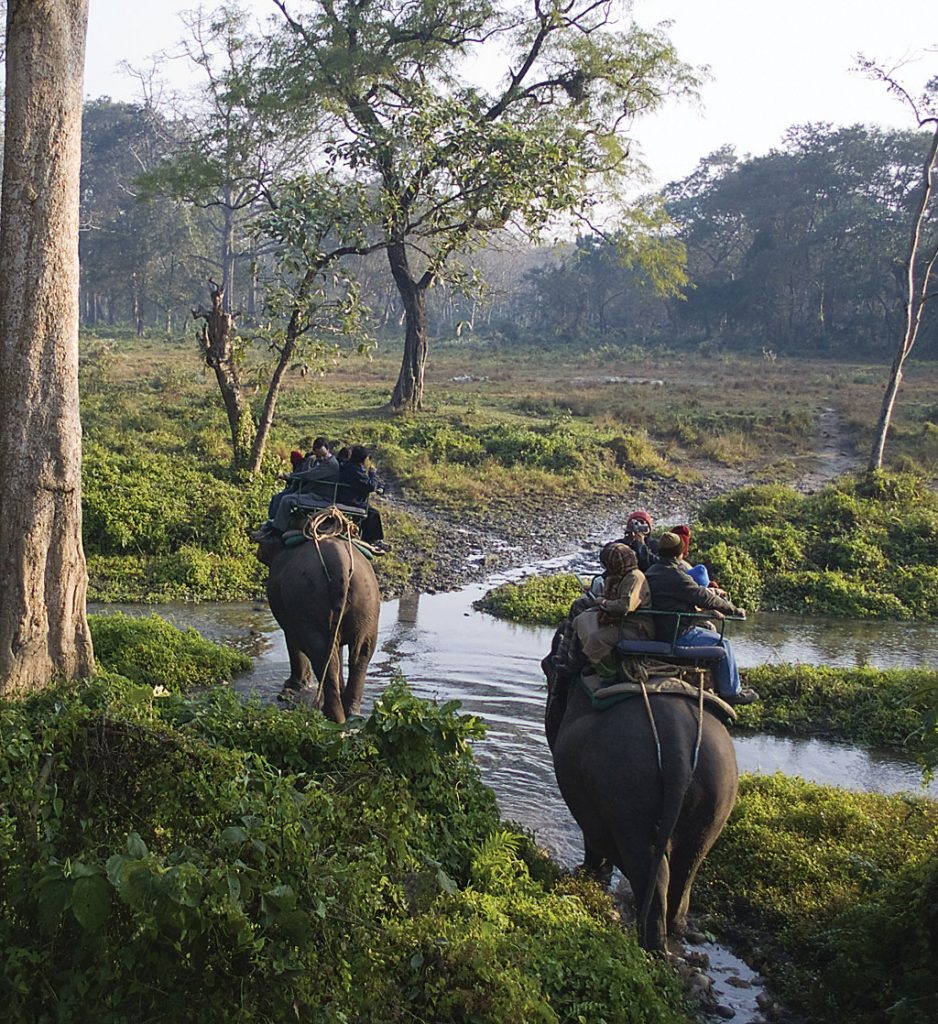
AMAZON UNDER THREAT: Environment scientist Donato Nobre says that “If we only see the damage done to the Amazon from the shrinking range of the forests, then it means that we are misleading green.”
The devastation of the Amazon rain forests so far is far more than the twenty percent loss figure coming in the media. Donato Nobre says that to assess precisely how much of Amazon’s living area has been destroyed, we have to include biological degradation data in our estimation.
This occurs when an ecosystem enhances it hard to function properly due to pressures on one part of the forest, such as fire, deforestation, and unlicensed hunting.
Again, even though the amount of trees and green areas in any part of the forest is not reduced, due to biological degradation, the rainforests lose their properties, which are very important for our earth.
Scientists say that if we do not stop the current level of damage and degradation of forests in the Amazon, the consequences of climate change will be more terrible.
Every forest has a different kind of devastation. The best way to evaluate the damage done to the forests in any organic area is to determine the ‘shrinking of trees’ in a field where the woods are entirely cleared
According to the Global Forest Watch, in the year 2018 solely, the level of reduction of trees in the Amazon had reached forty thousand square kilometers or four million hectares.
About half of it was the primary forest area. These 17 lakh hectares of forest area were in the original state at the time of the beginning of the Amazon forest.
And rich biodiversity was found in these forests. One can understand this loss of the Amazon forests so that the intact forests equal to the three football fields were dying every minute.
What role do trees play?
Native or primary forests located in any living area contain trees that are hundreds or even thousands of years old. They play a significant role in reducing the ill effects of climate change. These trees have been absorbing the emission of carbon dioxide and depositing it inside themselves for centuries.
Trees release a portion of the carbon dioxide they absorb from the atmosphere during photosynthesis, back into the atmosphere during the breathing process.
The rest of the carbon dioxide is converted into tree carbon. Then they use it to produce carbohydrates, which keeps their biological activity going. The older and more extensive the tree, the more carbon is stored inside it.
According to Doctor Erica Berenguer, a considerable tree (whose main trunk is at least three meters wide) absorbs three to four tons of carbon inside itself. This is equivalent to ten to twelve tons of carbon dioxide. A family car emits about the same amount of carbon dioxide in four years.
Many people believe that we can compensate for the forests we have lost in the Amazon by planting trees elsewhere. One direct side effect of deforestation is that carbon dioxide deposited inside trees in the forest returns to the atmosphere.
The carbon inside the tree is transformed into a gas again due to forest fires or the rotting of cut trees. For this reason, scientists fear that if such trees are cut down, and the forests are wiped out, then the Amazon organic area, which stores large amounts of earth’s carbon, will become a significant emitter of carbon dioxide. This will significantly accelerate the process of climate change.
In a recent study, it was claimed that Amazon is absorbing as much carbon from the atmosphere, now it is releasing more carbon dioxide in the air.
Antonio Nobre says that if we continue to the damage caused by the destruction of woods and the degradation of forests, which today compose more than fifty percent of the Amazon organic area, this part has stopped playing the role of environmental protector.
According to Antonio Nobre, the areas of the Amazon forests that have been decimated are twice the area cleared by cutting forests.
AMAZON UNDER THREAT: A recent report of the Government of Colombia testifies that between 2012 and 2015, the forests were cleared of one lakh 87 thousand 955 hectares from the Amazon region of Colombia.
However, the quality of four lakh 14 thousand 605 hectares of land has been reduced, which is more than double the area cleared by the cut forests.
Then what is the reason that when the forests of the Amazon are damaged, why is the degradation of the forested areas along with the cut forests not included in the assessment?
Alexander Lees of Manchester University says, ‘It is difficult to assess the forests’ degradation even though you can see the damage done to the woods from the pictures of the satellite.
However, you need ground-level data to know the real picture. The area whose forests have been damaged has increased or decreased. Or are they improving?’
Brazil is the only country in the Amazon biological region to release data on damage to forests every year.
However, the scientists of this entire region are trying to collect the actual data related to it, so that the current real state of the Amazon forests can be known.
What will happen if we lose the forests?
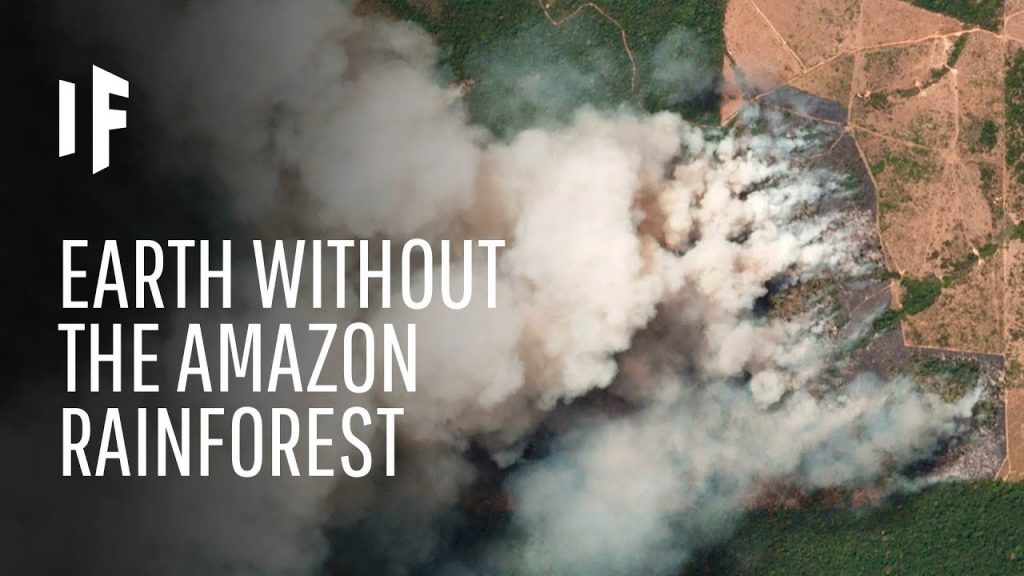
AMAZON UNDER THREAT: If the cutting and erosion of forests continue at their current pace, Amazon’s biological region will cease to play its role in balancing the tropical ecology. Even if some forests remain in this area
We are probably standing at the mouth, which is called the turning point of scientific destruction. This is the turning point where the Amazon organic field’s mood will change completely.
This will happen when the harvesting of the jungles of the Amazon organic region reaches 20 to 25 percent levels. And it can happen in the next 20 to thirty years.
This will increase the days of the dry season in the Amazon region and improve the forests. This will cause trees to die, and tropical rain forests, and savanna grasslands of Africa will look like
These forecasts still do not include the damage caused by the degradation of forests. The reason for this is that the estimation of the damage done to the Amazon biological region or Panamazonas spread in different countries is Challenging to do
One of the purposes of this is that Amazon maybe even closer than anticipated to its destruction. But, what would happen if the Amazon reached the point of ruin?
More limited rain
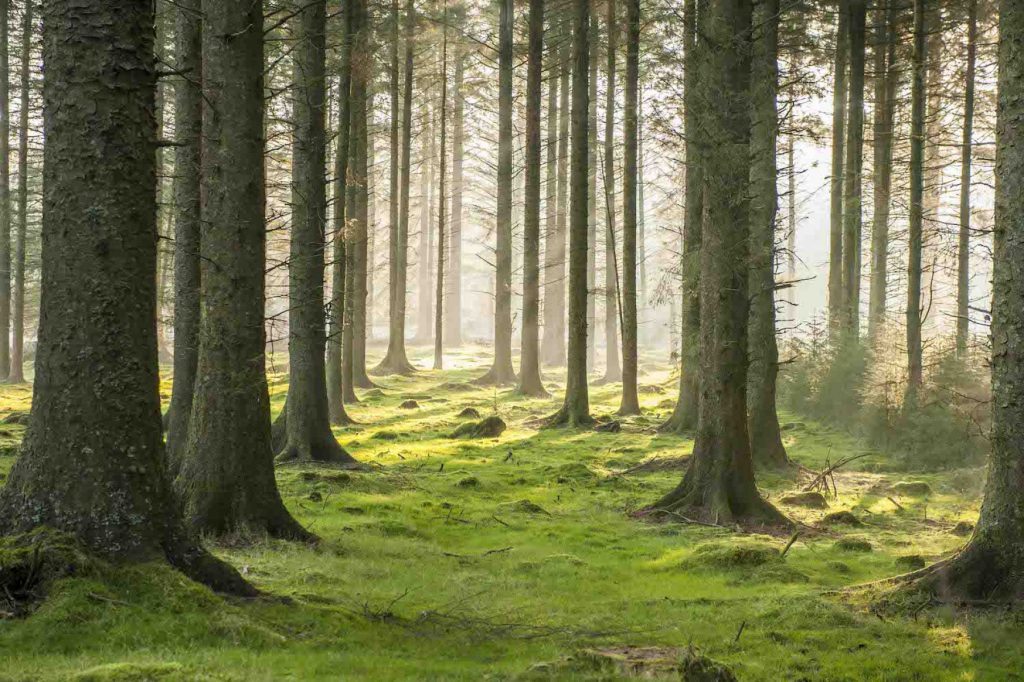
Scientists are not in a position to tell what will happen if there is a sudden change in the rainforests of the Amazon. However, Brazilian climate scientist Carlos Nobre says that the temperature of the entire region can rise by 1.5 to 3 degrees Celsius.
Areas in which forests will be destroyed will become like savanna grasslands. And this assessment does not include the temperature already rising due to climate change.
The rise in temperature will have a devastating effect on the economy of the entire region. Due to less rain and high temperatures, water availability for growing crops like animals or soy will be reduced.
More numerous diseases

AMAZON UNDER THREAT: Some studies have found that deforestation is associated with diseases spread by mosquitoes, such as malaria and leishmaniasis.
Due to the degradation of forests, insects will start looking for other sources of their food. They will begin to approach urban settlements
Beatriz Oliveira of Brazil’s Climate Change Investigative Network (Red Clima) says that heat-related heart and respiratory illnesses will increase as temperatures rise.
Oliveira says, ‘If the conditions remain the same as they are now, even by 2070, the temperature of the Amazon biological region can rise up to 8 degrees Celsius. Along with the removal of forests, global warming will also contribute.
Oliveira says, ‘If any other ecology is created in rain forests of any biological region, this increase in temperature may be even more. Or it could be even earlier.
Can we stop Amazon from coming to the brink of catastrophe?
According to Carlos Nobre, there is a way.
- First of all, we have to implement the zero deforestation policy in this area.
- If we can re-cultivate forests in this broad area from 60 thousand to 70 thousand square meters, then.
- But, this is not an easy task the next time.
AMAZON UNDER THREAT: What are the uncertainties in nine countries of the Amazon region
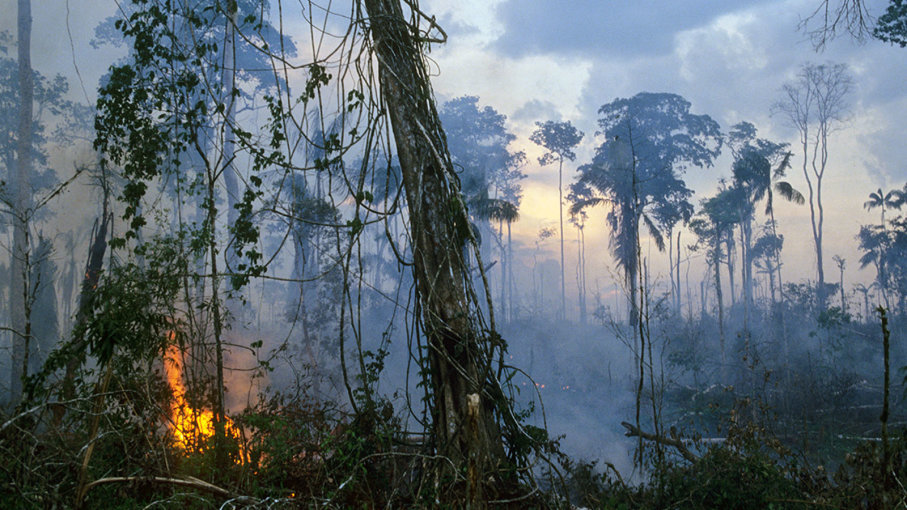
There are often disputes between governments, environmentalists, companies, and primitive residents of nine countries of the Amazon Biological Zone over the removal of forests and its causes: the conflict between the Amazon’s preservation of economic development expectations and its original inhabitants. The Amazon population has an impact on the entire ecosystem here. These include those who live outside and away from this living area.
Antonio Nobre says that if the Amazon forests were not there, the enclosure that would form central and southern Brazil and the River Plate Basin would have been deserted.
People do not even realize that if we lose this magnificent water system, then what will happen? Then what are the reasons why forests are being wiped out in every country of the Amazon region?
How many original forests have been destroyed in these countries, and what are the governments of these countries doing to stop this process?
Which country is suffering the biggest threat to Amazon?
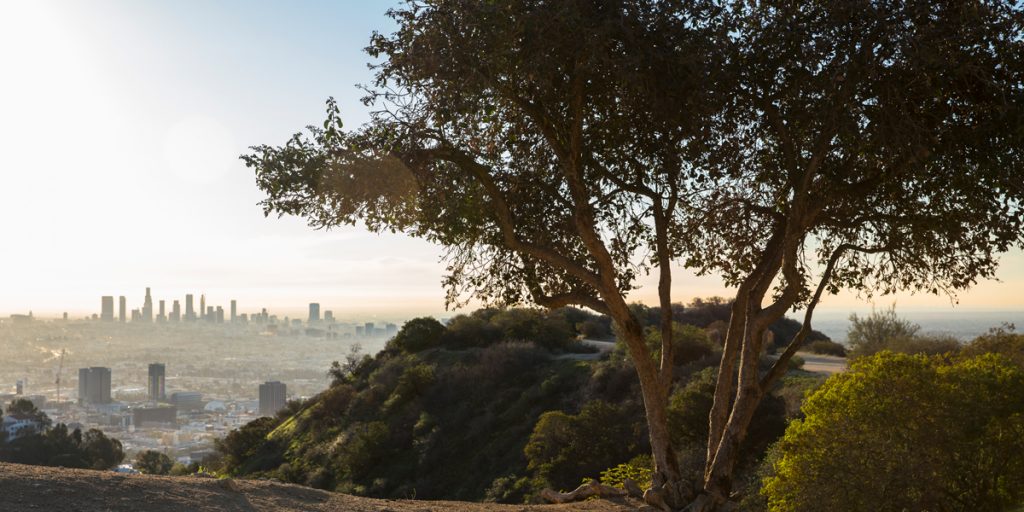
AMAZON UNDER THREAT: According to an NGO named Friends of Nature Monitoring, the fire that broke out in Bolivia’s forests in May 2019 devastated nearly two million hectares of forests.
Half of these forests ravaged by fire were in the protected area. Who are known for their extensive biodiversity Environmentalists say that the government of Bolivia’s President Ivo Morales has encouraged the protection of forests in the Amazon region with policies to sell land.
This land is sold to prominent people in the business. At the same time, it is also distributed among the farmers. Native forests perished in Bolivia between 2002 and 2018. The main goal of expanding the scope of farming is to cultivate soy and raise animals.
So that products can be prepared for the needs of the Chinese market. In August 2019, Ivo Morales celebrated the first export of beef from Santa Cruz to China. About half of Bolivia’s total soy production was produced in this area in the year 2018. And the same year the worst fire was in this area.
Following the fire crisis and criticism, Ivo Morales stopped the sale of land in the Santa Cruz area. Morales called it ‘ecological restriction.‘ We had asked Bolivia’s environment ministry what strategy it was implementing to stop deforestation, but there was no response.
Brazil
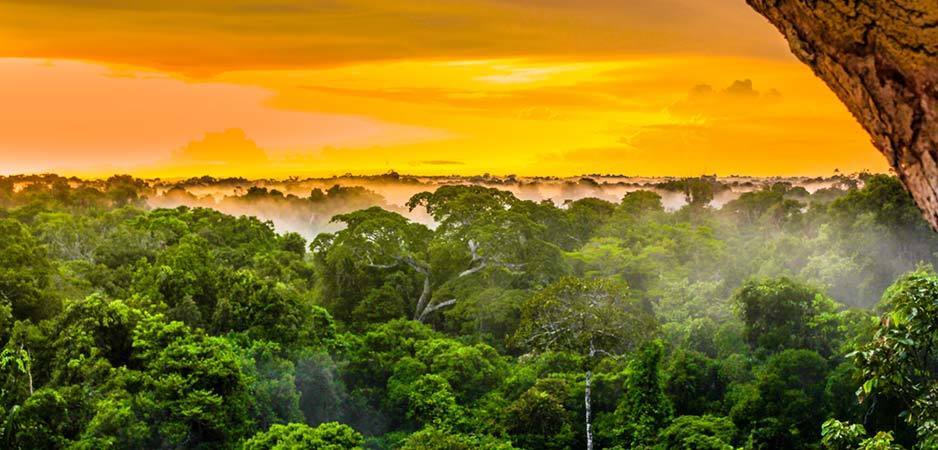
Amazon Area: 42.13 million hectares
Native forests destroyed: 18 percent Between 2004 and 2014, the pace of destruction of forests in Brazil had reduced significantly. For this reason, Brazil also received accolades from all over the world. Because in the entire ten years, the loss of forests in Brazil had decreased by 80 percent.
However, once again, the cleanliness of the forests in Brazil has been accelerated. In November 2019, the Brazilian government published figures to justify that assessment of experts, according to which the destruction of forests in the Amazon region between mid-2018 and 2019 increased by 30 percent compared to the year before.
In Brazil, since 2008, 9 lakh 80 thousand hectares (9800 sq km) of forests have been cut, and the land cleared. Which are the cleanest land in any country And these figures do not include the statistics for August 2019.
Whereas during that time the Amazon biological sector had the worst fire The government of Brazil’s President, Jair Bolsonaro, claimed that the cause of this fire in the Amazon is the dry season. This claim was found to be false in the exploration of AM and Acre’s federal university According to their report, the Amazon fire is directly related to deforestation.
Erica Berenguer says, ‘After the trees are harvested, they allow the dry leaves to remain for several months. Then set fire to clean these dried leaves. After this, the grass is grown in the cleared land, so that pastures can be prepared. According to the World Food Organization, the destruction of 80 percent of trees in Brazil is directly or indirectly linked to cattle rearing.
Brazil is the world’s largest beef exporter. The beef industry accounts for 7 percent of Brazil’s total GDP. However, it accounts for 4.6 percent of the country’s total exports. Today, 40 percent of Brazil’s animals are reared in the states falling in the Amazon Biological Region. But, this is just one aspect of the whole story. Sixty million square hectares of the Amazon organic area in Brazil are considered public spaces.
In other words, according to the government’s rules, there is no statutory definition of them. Stabile says that, for example, these are not protected areas. Nor are these areas with primitive tribes declared. That is why people clean the forests of this forest area and prepare the land themselves.
And then animals are raised there. This is the cheapest way to occupy that area. If there is no single tree on any piece of land, it is more valuable for the market. The land prepared by clearing the forests is initially used in Brazil to raise animals.
But, every time its purpose is not to earn money from the production of meat. Instead, we have to make money by selling land.
Marcello Stabile, Amazon Environmental Research Institute IPAM
Marcelo Stabile says that the next step in cutting the forest is to own the land and then sell it illegally. And then they start cutting some other parts of the woods. This land is usually sold to large-scale cultivators.
In such a situation, it is difficult to determine which piece of the property was legally cleared and which part of the forest was illegally cut.
The same is the case with Colombia, Peru, and Ecuador
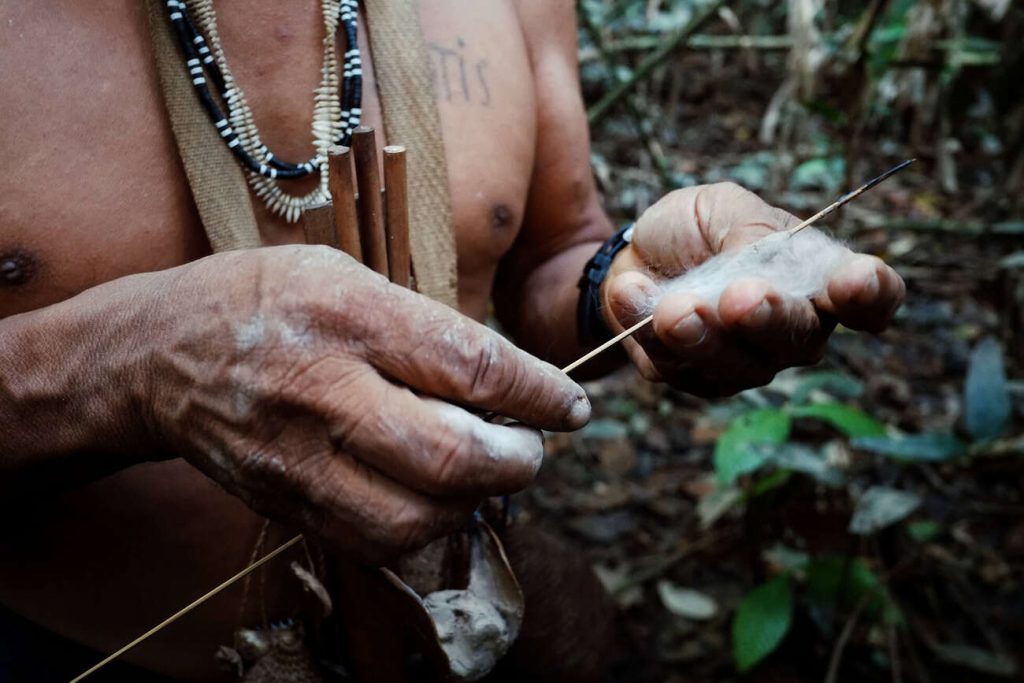
AMAZON UNDER THREAT: According to Marcelo Stabile and other investigators, Brazil can increase the yield of its animals by two or three times, even without causing further damage to a single hectare of forests in the Amazon year.
Marcello says, ‘What is happening should be called land gambling. If the government clearly defines these areas, then cutting these forests will no longer be profitable.
According to environmentalists and investigators, the Bolsonaro government’s statements and policies are going to promote the cutting of forests. Apart from this, these policies also lead to the exploitation of primitive tribes.
Although the Brazilian government denies this, President Bolsonaro said that he wants to end the ‘industry of environmental taxes.‘
And they believe that there are very few protected areas in the country. Bolsonaro’s government also intends to allow excavation of the lands of primitive tribes. Between January and September 2019, attacks and encroachments on the land of the original inhabitants saw a 40 percent increase over the previous year. These attacks were accused by land sweepers, tree cutters, and miners.
However, as the coronavirus epidemic grew in May, approximately four thousand security forces were sent to the Amazon region for June. So, illegal cutting of trees and other illicit activities can be stopped. These security forces may be kept in the forest for the dry season that comes after that.
Environment Minister Ricardo Sayles says the coronavirus epidemic has increased illegal activities in the Amazon region this year. However, Brazilian President Bolsonars has said not to take strict action against those who illegally cut trees and mine.
Bolsonaro says that the equipment of illegal workers cannot be destroyed where it is not possible to bring them out of the forest. Critics say that this sends a message to the illegal mining and illegally cutting trees that the government stands with.
Colombia
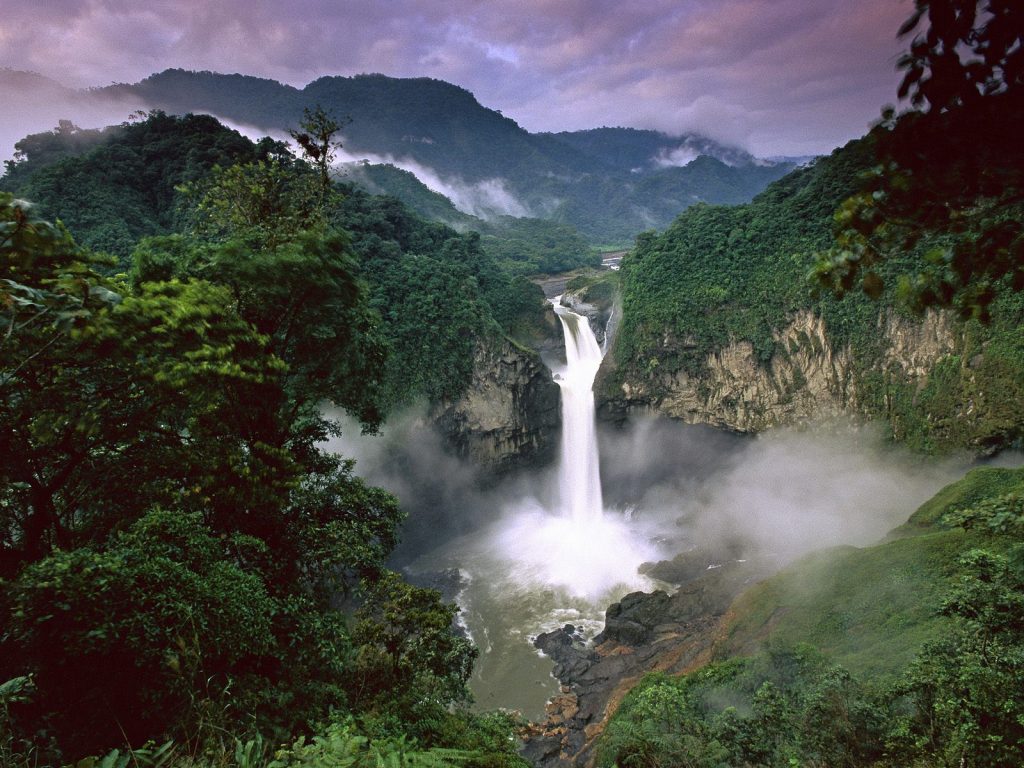
Amazon Biological Area: 4.85 million hectares
How many original forests were destroyed: 11.7 percent In 2017, in the entire Amazon region, Colombia had the most significant number of forests being harvested. This was the record for the most forest destruction in Colombia’s history.
More than one lakh forty thousand hectares of forest were cut down. Which were twice more than the year before The destruction of forests in Colombia on such a large scale was because, in 2016, a peace agreement was reached between Colombia’s Fars rebels and the government. Due to this, there was an emptiness in control of forests.
Community leaders say that Fars rebels were acting as environmental police. He controlled the process of allowing farmers to clear the forest. They were also allowed to enable the burning of forests for farming or rearing animals.
Rodrigo Botero, director of the Foundation for Conservation and Sustainable Development, says that “because of FARS, government officials did not even go near the jungles.”
And for their protection, Fars needed shelter in the forests. For this reason, the rebels of Fars were strict about the security of the woods. However, it seems that Colombia is now competing to clear the forests of the Amazon region. Botero says it includes large-scale cultivators, local officials, drug dealers, and other paramilitary forces such as the ELN.
Botero says that there is a market of land and Can’t ignore it. The Colombian government set up the National Council for Fight Against Deforestation to prevent the destruction of forests.
According to Colombia’s Ministry of Environment and Sustainable Development, the group identifies the areas where forests have been wiped out, finds out the cause, and decides what action needs to be taken.
A law made in 2018 declared the protection of water, biodiversity, and the environment as a matter of priority for national security. Now Colombia’s government can directly intervene to prevent illegal activities in areas such as the Amazon National Park.
Besides, the government of Colombia takes action against those who illegally cut the forest. Apart from this, the government also starts financial assistance programs to stop the conservation of forests.
But, in the year 2018, only a 4 percent reduction in deforestation was recorded. By the year 2018, 11.7 percent of the original forest was destroyed by the Amazon organic zone of Colombia. And this happened only in the last eight years.
Ecuador
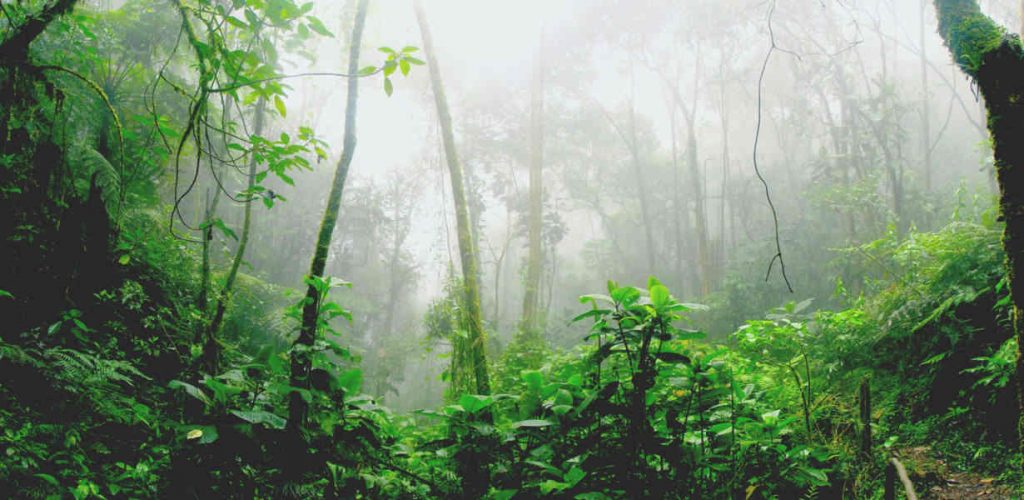
Amazon Area: 10 million hectares
What percentage of primary forests were destroyed: 10 Palm oil production in the north of Ecuador is the biggest threat to the Amazon region.
Palm oil is used in industries all over the world. It is used in making chocolate, cosmetics, cleaning products, and fuels. Ecuador is the second-largest producer of palm oil in Latin America. Ecuador ranks sixth in the world in this matter.
According to the Global Forest Watch and Measurement, the main reason for the destruction of forests in Ecuador is that the cocoa and palm oil garden area has increased in the last ten years.
It is of particular concern that Ecuador’s forests have the highest biodiversity despite having only two percent of the Amazon biological region. In only one hectare area of the Yasuni Park area, you will find 670 species of trees. Which is more than the species of trees found all over North America
Even more importantly, according to Ecuador’s National Institute of Biodiversity, 40 to 60 percent of the species of trees found in the jungles of the Amazon region of the country is still unknown.
Mining explosion
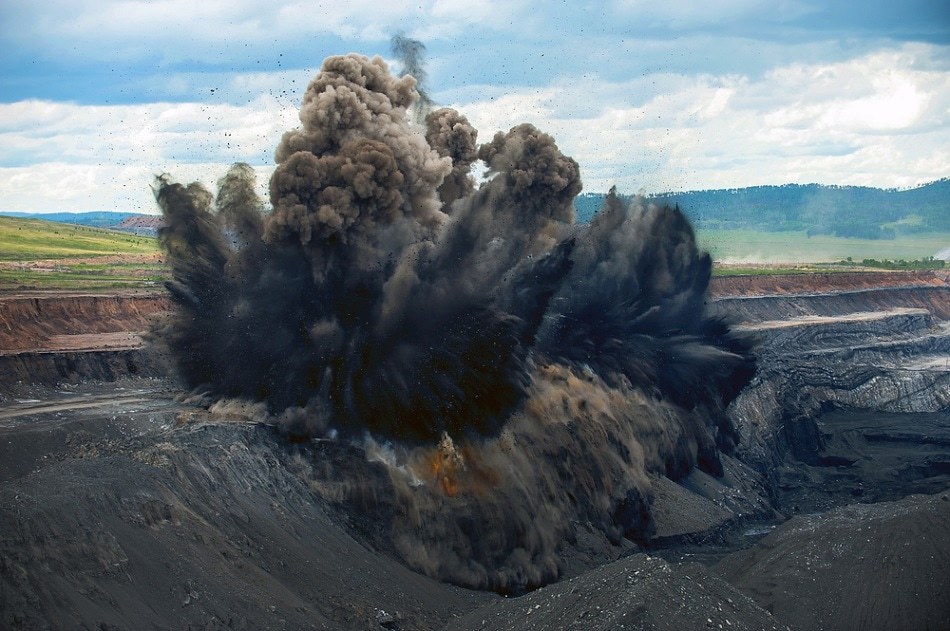
Mining projects and oil exploration campaigns in Ecuador have also made headlines. One such project is in Mirador. There are open mines of copper, gold, and silver, made in two states of Amazon. This is the largest project of its place in Ecuador. But this is not the only project.
The Ecuadorian government says that a Chinese company doing industrial excavation in the Amazon region will be a responsible project. The proceeds from it will be used in the development of local infrastructure.
However, investigators believe that such mining activities in the Amazon region will create problems for the part. Carmen Hosey, Scientific Director of the Ecoscience Foundation, says that “these projects will destroy the forests, and we don’t even know where they are going to build dams and keep an eye on them.”
French Guiana
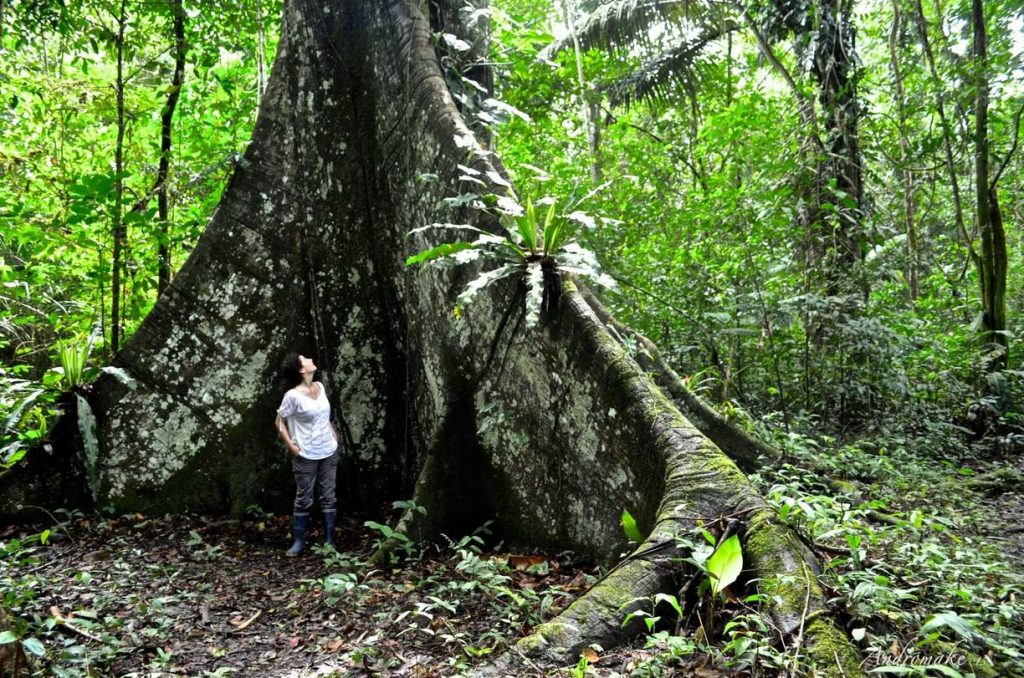
Amazon organic area: 80 million hectares
How many original forests destroyed: 3 percent
French Guiana soldiers searching for illegal miners.
AMAZON UNDER THREAT: In 2016, the Global Forest Watch said that 75 percent of the Amazon region in French Guiana has remained untouched by humans’ access or intervention.
French Guiana is the only country in the Amazon region, where most of the area falls under the category of protected forests. About 50 percent of the woods here are protected areas, and forests are the least damaged.
However, representatives of the original inhabitants and environmentalists in French Guiana are concerned that legitimate and illegal mining in the country is increasing. Encroachment in the protected area is also growing.
In early 2019, French President Emmanuel Macron canceled a significant gold mining project within the Amazon National Park in Guyana, whereas Macron had approved this project in his early career.
National and international campaigns were behind the postponement of this project.
Despite this, the Amazon National Park is most threatened by illegal mining.
Security forces have found that illegal mining in this area is increasing rapidly since 2017.
There are eight to ten thousand illegal miners in French Guiana with fewer than three lakhs. Since the financial crisis of 2008, gold prices have been competing to find gold in the jungles around the world due to a continuous increase in gold prices.
Captain Vienna, who leads the international squad that leads the campaign against the illegal mining of gold in French Guiana, says that in most cases, Brazil’s poor children do these things to earn money quickly. For this, they lie in the forests for many months.
We asked the Ministry of Foreign Affairs of France what strategy is the government adopting to stop the destruction of forests? But they did not answer it.
Guyana
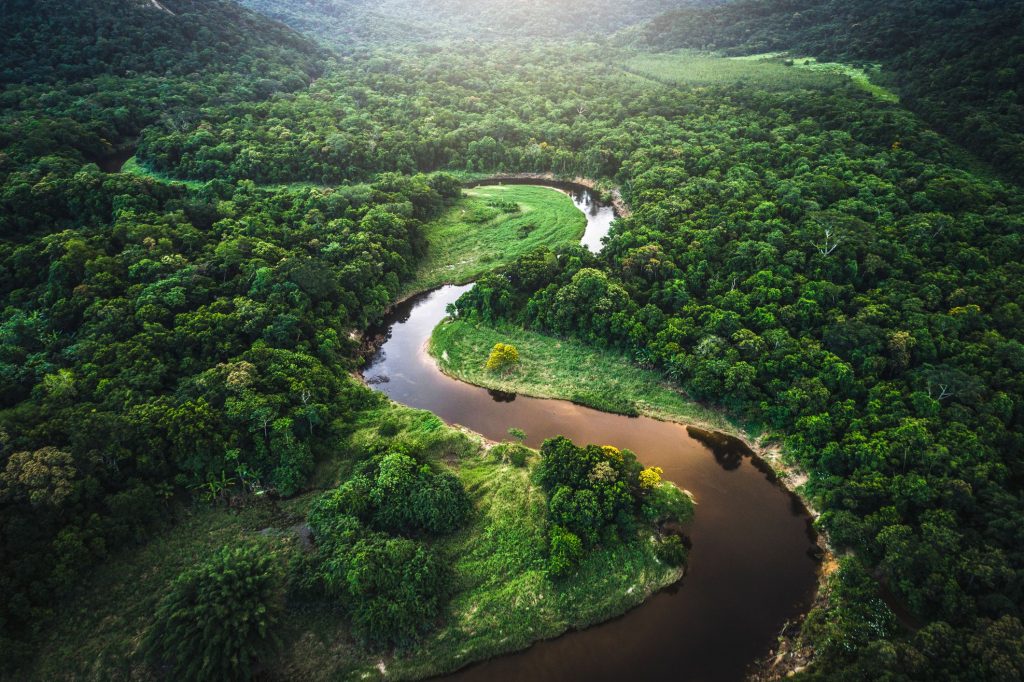
Mezzanine organic area: 2.11 million hectares
How many original forests destroyed: 1 percent
AMAZON UNDER THREAT: 95 percent of the territory of Guyana falls in the Amazon Biological Region
Guyana treats its forests in two ways, which is contradictory to many people. On the one hand, Guyana wants to use its forests financially.
On the other hand, Guyana promotes itself as a green country that protects Amazon.
The annual rate of deforestation in Guyana is the lowest in the entire region.
The yearly rate of harvesting of forests in 2018 was only 0.051 percent as per government data.
The formation of the Forest Management Commission is also a significant reason for Guyana’s success in the preservation of the Amazon. This commission decides which trees can be cut and which cannot be cut.
However, the lawful cutting of trees controlled by the government is also being considered responsible for the cleanliness of the forests.
According to environmentalists, by giving licenses to large-scale international companies to cut trees, they can interfere with untouched forests. Illegal miners take advantage of this.
According to the Forest Commission of Guyana, it has not licensed the lawful harvesting of trees in a new forest area since 2015.
The government of Guyana says that the reality is that many areas were withdrawn from companies that were previously given them on contract to clean the forest. And these removed areas were declared protected areas.
According to the Forest Commission of Guyana, illegal mining and especially gold-digging are responsible for 85 percent of the damage to the country’s forests. Gold is the main export product of Guyana.
The Government of Guyana says that it has a ‘green country development strategy,’ which includes tightening restrictions on carbon dioxide emissions and more investment in environmental tourism and recycled energy, and points to promote forest conservation.
All these activities are carried out with international agreements’ help so that the Amazon organic area can be conserved, and vast reserves of oil are found in the sea.
Peru

Amazon organic area: 7.89 million hectares
How many original forests destroyed: 8 percent
AMAZON UNDER THREAT: Originally small-scale farming is responsible for the protection of forests in Peru.
However, in recent times there has been a spurt in the planting of palm oil gardens, cocoa, and coca orchards.
According to a 2018 study, palm oil orchards were the cause of the destruction of 11 percent of the forests between 2007 and 2013, despite being just 4 percent of the Amazon region’s crops. Palm oil is used all over the world as food, cosmetics, and organic fuel.
Sandra Ríos of the Peruvian Institute de Bien Comun (IBC Peru) says that she started buying land from small farmers after some palm oil producers were fined for causing damage to the forests because the farmers had already prepared these lands by clearing the forest illegally.
The Peruvian government has been lax in monitoring illegal forest felling activity, keeping it under control, and punishing those who cut the forest.
Sandra Rios, IBC Peru
We had asked the Peruvian Environment Minister about the strategy to be followed to stop the forest from being cleared, but he did not give us any answer.
The Amazon jungles in Peru are the most significant risk from illegal gold mining. Peru is the largest exporter of gold in Latin America.
Peru ranks sixth among gold exporters worldwide. However, experts say that a quarter of Peru’s gold comes from illegal mining.
Since 2006, Peru has seen a boom in the search for gold. Especially in the Tambopata Nature Reserve area here. It is one of the most biodiversity areas in the region.
The rise in gold prices in Brazil and the construction of the Brazilian Peru Transoceanic Highway have intensified the search for gold in Peru.
The road connecting the Pacific Ocean to the Atlantic coast has facilitated movement. Still, it has also made it easier to go to areas of forest where it was previously thought impossible.
The mining group in this area, also known as La Pampa, has grown to five thousand members.
These miners cut and clear greenery or trees, in the Amazon, so that they can find gold. They use mercury to separate gold from other metals.
Due to which the water becomes poisonous. This process causes the poison to local animals.
According to the Center for Amazonian Scientific Innovation (Ciencia), the loss of forests due to mining in 2017 was the highest level since 1985.
Suriname
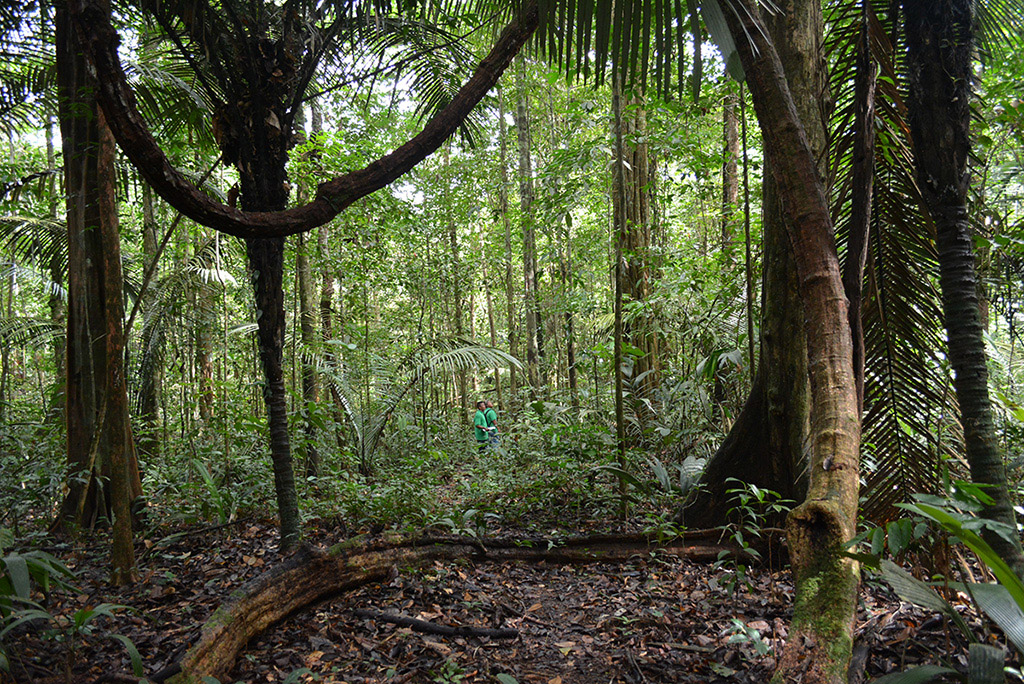
Amazon Biological Area: 14.4 million hectares
How many original forests are over 4 percent
AMAZON UNDER THREAT: Ninety-four percent of the total area of Suriname falls in the Amazon biome.
Suriname’s record in terms of conservation of this biological region is much better than many countries.
However, since 2012 there has been a spurt in the protection of forests in Suriname. The main reason is a gold mining
According to the Forest Management and Production Control Foundation, between 2000 and 2014, the mining sector in Suriname recorded an increase of 893 percent.
Whereas, earlier gold-digging in Suriname was known as a small-scale industry or a country with mines working in goldsmiths.
This government foundation says that 73 percent accountability for the removal of forests in Suriname is excavated.
Despite its small size, Suriname ranks tenth among the world’s gold-producing countries. This is not possible without illegal mining.
Most illegal mining in Suriname takes place in far-flung areas to avoid the authorities.
It is believed that 60 percent of the gold mining mine workers in Suriname are from Brazil, illegally crossing the border and working here.
Mining has become a significant source of livelihood in many substantial areas occupied by primitive tribes or descendants of slaves.
Venezuela

Amazon Biological Area: 47 million hectares
Original forests that were destroyed: 4 percent
AMAZON UNDER THREAT: In Venezuela, no official data is available on how many Amazon forests have been destroyed so far.
However, data from local and international scientists monitoring the situation in Venezuela suggest that forest destruction in Venezuela has intensified over the past few years.
Especially since the formation of the Orinoco Mining Arch, it has gained further momentum.
After a dramatic fall in crude oil prices and reduced oil production in Venezuela since 2014, the Maduro government has focused its attention on exploiting the country’s abundant mineral resources such as the Amazon.
Venezuela is believed to be ranked sixth in terms of natural gold reserves, and the mines here are estimated to have around 7 thousand tonnes of gold.
The Orinoco Mining Arch was formed in 2016. After its formation, licensing began to discover precious metals such as gold, diamond, and coltan (a mixture of columbite and tantite used in the production of mobiles) in an area of 1,12,000 square kilometers of the country. This area is 12 percent of the total area of Venezuela.
The area consists of significant natural areas, protected forest areas, and Amazon National and territories with at least four designated primitive tribes.
Carlos Peláez, an ecologist at the NGO Provita, says that the Orinoco area has traditionally been excavated. Even the natives here have been mining in this area.
Carlos says, ‘The law already had a provision for legitimate mining. And this did not reduce illegal mining. It has a terrible effect on the environment and the local population.
Maduro planned that he would allow mining to foreign mining companies at concessional rates.
The condition for this was that they would tie up with Venezuelan government companies to run their activities in that area legitimately.
However, according to Carlos, this led to an explosive increase in small-scale mining activities.
According to the Central Bank of Venezuela, in 2018 alone, the government bought 9.2 tonnes of gold from the domestic market.
This was equal to the amount of gold purchased from 2011 to 2017
Amid the political crisis in Venezuela, the country’s national assembly attempted to change the law establishing the Orinoco Mining Arch. And called it a crime against the environment or ‘ecocide.’
We asked at least three Venezuelan ministries what strategies they are planning to prevent the destruction of forests in the Orinoco zone, but they did not respond.
Table of Contents





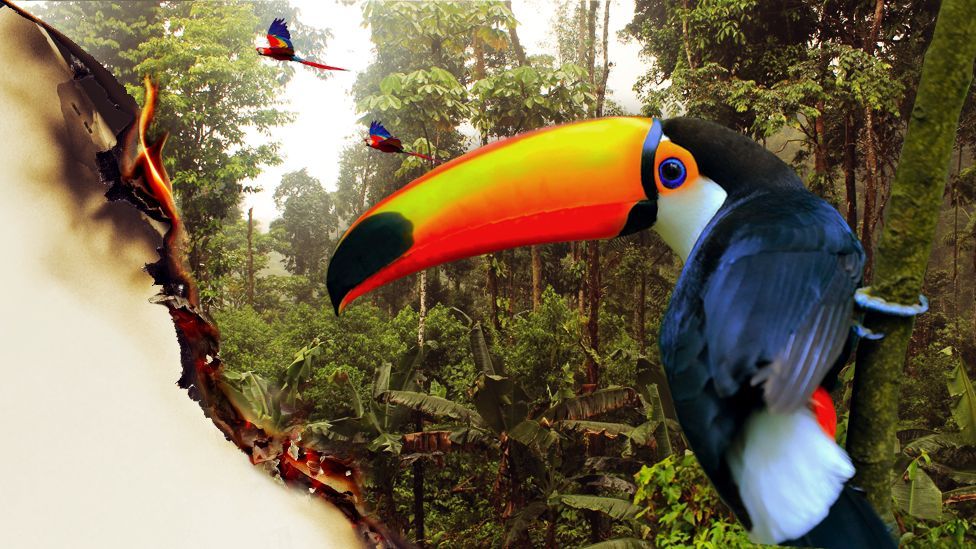

Add Comment